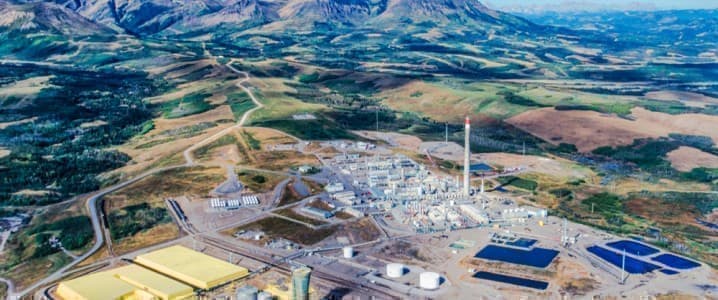Despite embracing a green transition through the introduction of ambitious climate pledges, Canada continues to produce large quantities of highly polluting oil sands. Oil production has long contributed to Canada’s economy and the oil-producing province of Alberta continues to rely heavily on the industry for jobs and revenue. However, Prime Minister Justin Trudeau has repeatedly stated his commitment to decarbonisation and Canada’s renewable energy industry, which appears to be at odds with the country’s oil sands production. Further, recent studies suggest that Canada’s tar sands may be much more polluting than previously thought, drawing further criticism.
Canadian tar sands are a mixture of sand, water, clay, and a type of oil called bitumen, from which oil can be recovered through heavy refining. Oil sands are much more polluting than other lighter forms of crude due to the extensive refining process required to extract a usable form of oil. For this reason, environmentalists have repeatedly criticised the government for allowing oil sands operations to continue, particularly following the introduction of ambitious climate pledges.
An article published in January in the journal Science showed that the level of air pollution from Athabasca oil sands production was far higher than the industry-reported emissions across several facilities. The study recorded levels of between 1,900 percent and over 6,300 percent higher than the industry-reported emissions levels. The researchers examined emissions from surface mining operations, as well as extraction from deeper deposits of bitumen.
Environmentalists have long been criticising the Canadian government for allowing the production and refining of oil sands to continue, considering the high levels of pollution involved in the process. As many governments around the globe seek to shift away from fossil fuels to renewable alternatives, reducing their coal and oil consumption, Canada continues to produce the most polluting form of oil. In fact, Alberta has experienced record levels of oil sands production over the last year.
One senior energy strategist for Greenpeace Canada, Keith Stewart, said: “In quantifying the astonishing and largely unreported levels of health-damaging air pollution coming out of oil sands operations, these scientists have validated what downwind Indigenous communities have been saying for decades. This is making people sick, so our governments can and should require these companies to use some of their record-breaking profits to clean up the mess they’ve made.”
Indigenous communities in the region have been reporting poor living conditions and a wide range of health issues, that they believe to be related to oil sands production, for several decades. However, they have been repeatedly told that emissions from oil activities are within safe limits. Now, the results of this study may suggest otherwise. Last year, several leaks from tailings ponds at oil sands operations were reported, drawing attention to the activities and their potential impact on the health and the environment, and this study is expected to put even greater pressure on the government to act.
Canada is optimistic about the future of its oil industry, with the oil and gas market expecting to see a CAGR of over 1.8 percent between 2022 and 2027. In 2021, Canada registered North America’s largest oil reserves, with a proven 168.1 thousand million barrels. And following the Russian invasion of Ukraine and subsequent sanctions on Russian energy, the demand for alternative oil supplies has risen, with the U.S. and other countries turning to Canada to fill the gap. Canada’s crude output was expected to increase by 175,000 bpd in 2023 and another 200,000 bpd in 2024, with some outlooks suggesting that annual oil sands production alone could rise by around 350,000 bpd by 2025.
Despite its ongoing reliance on oil and gas operations, Canada has announced several ambitious climate pledges in recent years. Prime Minister Trudeau has stated aims of cutting Canada’s carbon emissions by between 40 and 45 percent by 2030. In December, the government introduced its long-awaited plan to cut emissions from the oil and gas industry. It asked fossil fuel companies to reduce emissions by up to 38 percent from 2019 levels by 2030, using a cap-and-trade system.
While many industry groups and oil-producing regions criticised the move, the scheme backs up repeated promises made by Trudeau to decarbonise the economy, including its oil and gas industry. Federal Environment Minister Steven Guilbeault stated, “It considers the global demand for oil and gas, and the importance of the sector in Canada's economy, and sets a limit that is strict, but achievable.” The first compliance period is set to begin between 2026 and 2030.
Nevertheless, the results of the recent study suggest that oil and gas companies operating in Canada are significantly underreporting their emissions, meaning the cap-and-trade system could be ineffective unless reporting standards are adhered to. Further, unless the government does something to prevent the widespread underreporting, the emissions from oil sands production could continue to damage the environment and be detrimental to public health.
By Felicity Bradstock for Oilprice.com
More Top Reads From Oilprice.com:
- Montenegro Aims to Become a Global Crypto Hub
- Uranium Prices Soar As World Turns to Nuclear Power
- Political Backlash and High-Interest Rates Dampen ESG Enthusiasm



















As I have always maintained, energy security and the benefits and needs of an economy take precedence over climate change objectives. Luckily, there is a solution to rising pollution from Canada's oil sands production: investment in and employment of the latest carbon-catching technologies.
Dr Mamdouh G Salameh
International Oil Economist
Global Energy Expert